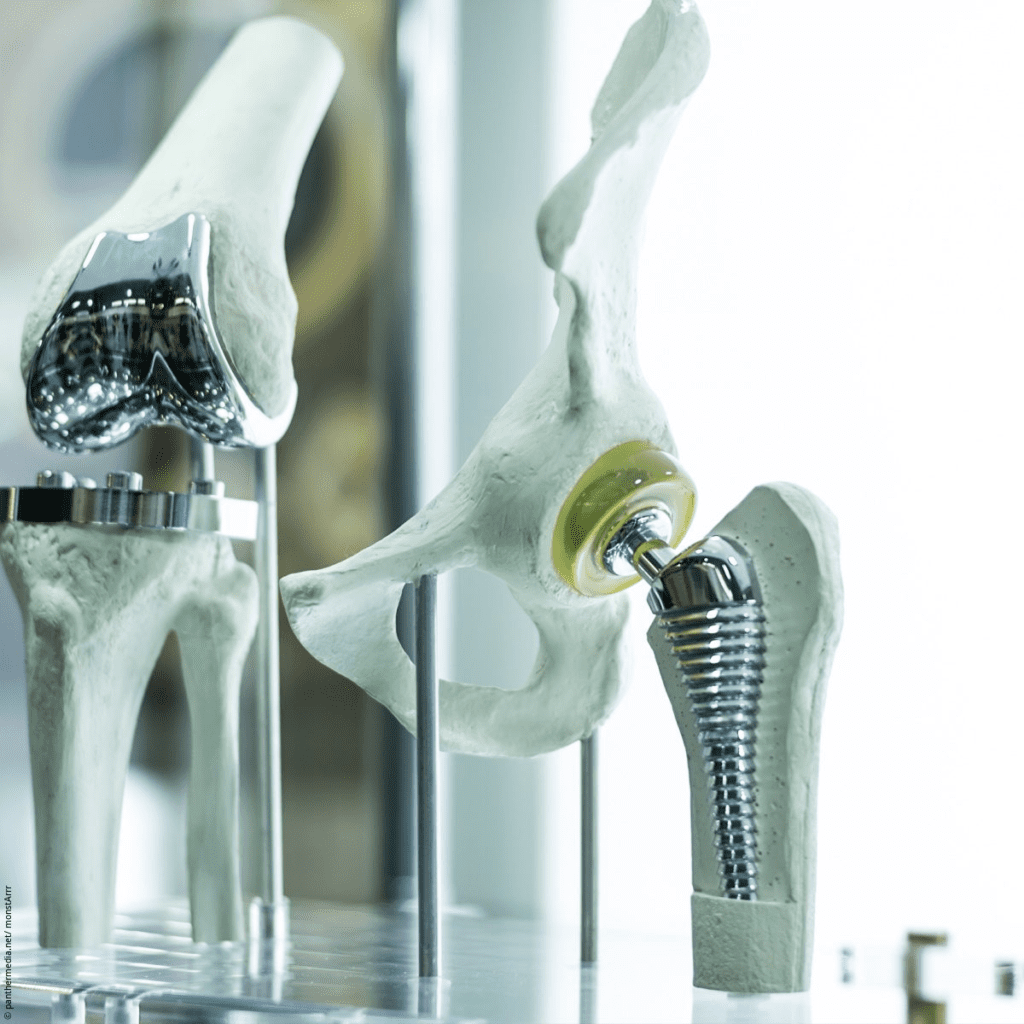
Article Authors: Gordon Slater | Tandose Sambo
What is a Smart Orthopaedic Implant?
As medical technology advances, smart implants have begun to emerge in the orthopaedic realm as therapeutic agents. They provide predictive capabilities by diagnosing patient conditions prior to an adverse occurrence such as an infection. Smart orthopaedic implants contain sensors that measure the body’s health parameters such as pressure, force, strain, displacement, proximity and temperature. As the parameters are measured, the data is sent to computer applications that medical personnel can then monitor. If a parameter is indicating abnormal values, further investigations and treatments can be implemented by the medical team. These treatments often include treatment strategy updates or changes in the implant design. There is a learning curve with every therapy, and smart implants are becoming a part of daily clinical practice. Current trends in medical innovation indicate that real time data access to patients is the wave of the future.
Every medical innovation requires the requisite infrastructure, and the inclusion of sensors to current implants requires that the sensors be modified to accommodate this change. Once these infrastructure modifications are made, the smart implant will become part of mainstream health care. As the next generation of smart implants emerges, the time is approaching when they will be standard.
What can Smart Implants do?
The smart implant will revolutionize the existing implant pool, in a similar manner that the smartphone has revolutionized communication. With the ability to measure critical health parameters, it will be possible for personalized medical care to be the norm. As a patient’s healthcare is optimized, the need for doctor’s visits will reduce and overall healthcare costs will also be reduced. The data generated by the smart implant, will be part of the predictive healthcare cycle of the patient. With earlier detection, treatment can be accelerated, and the condition eliminated. The healthcare system will benefit from the minimization of expensive complications, the decrease in recovery times, decrease in lost work days after surgery, and the reduction in readmissions.
There are technological features that enhance the performance of smart implants. These include the understanding of the power requirements of the sensor, as well as the IT infrastructure requirements that will enable the transfer of data once the sensor has generated it. Orthopaedic implants are relatively large in size, and they do provide an opportunity for the housing of the sensors, electronics and telemetry onto the surface of the device.
Applications of Smart Implants in Orthopaedic conditions
Osteoarthritis is a degenerative condition that affects the joints. With various stages of development, there are a variety of treatments that are available to patients. Acute cases of osteoarthritis will have non-invasive treatments, while more severe cases will often require surgical intervention. For the surgical option, patients are often administered a total knee arthroplasty. With a global increase in these surgical procedures, the implementation of smart implants will improve the quality of care of these patients. Since the knee does bear weight, it will be beneficial to understand the forces that each patient is undergoing as their healing progresses.
The current mandate in health care is to transition smart implants from the research and trial phase, and incorporate them into clinical practice. As the technology for in vivo data collection improves, the current proof of clinical value is becoming more and more evident as time progresses. As the first generation of implants is embraced, there will be a continuous evolution to the optimum design.
The current limitations in smart implant design that are currently being optimized include parameters such as: power consumption, communication range, data transfer rates, size, robustness and cost. Each of these have to be balanced in order to ensure that the operation of the unit in the body will be efficient, as well as the data transfer capabilities to patient care systems. One of the hopes during design was that the implant would generate its own energy, as well as have the smallest area in the implant for the circuitry. The image above will provide an idea for current design. As an ambitious endeavour, the future of implants is looking favourable. Sensors for next-generation smart implants will be small, simple, robust and inexpensive.
With the clinical effectiveness of smart implants being proven, the potential for impact in clinical care and the emergence of personalized medicine is becoming a reality.
Reference Article:
- Smart Implants In Orthopaedic Surgery: https://www.ncbi.nlm.nih.gov/pmc/articles/PMC6145822/


